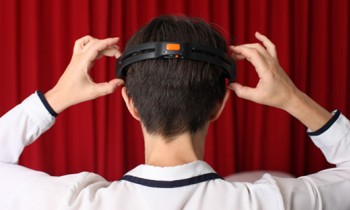Nathalie Regard, Dream session Paris
The daily exercise of dream transcription has trained Nathalie Regard to remember them with ever growing precision. The distinctive feature of a dream is to create a reality which we witness from the outside even though it comes from the inside. Nathalie Regard infiltrates this discrepancy through a physiological exploration of the dream activity. A branch of the cognitive sciences called situated cognition or embodied cognition supports the idea that the brain cannot be understood unless it is studied as being part of a body or a given situation. “A brain exists within a body, a body exists within the world and an organism moves, acts, reproduces, dreams and imagines” explains neurobiologist Francisco Varela.
With the collaboration of researchers Roberto Toro, who is a neuroscientist (Institute Pasteur) and neurologist Reyes Haro Valencia (Sleep Clinic, UNAM, Mexico), Nathalie Regard has developed an experimental protocol of sleep monitoring. Integrating her body in this context of study has allowed her to rebuild the environment of dream emergence, built upon the permanent exchanges between the inside and the outside, the internal perception and the environment. For over 80 nights, her dreams were being electronically recorded (EEG method) and stimulated in an auditive way which occasionally demonstrated their influence in the account of her dreams. These correspondences between brain activity and the subjective experience of dreaming were turned into the tangible form of bas-relief made from encephalographic data in 3D. These abstract landscapes could be seen as trophies marking out an impossible quest, the testimonies of fragile connections situated between the states of being asleep and being awake, and the possibility of getting a glimpse of the interaction with a physical memory opening onto a broadened awareness of our presence in the world.
press release and curatoring project for galerie laurent mueller / STUDIO - exhibition cycle "Code inconnu"


